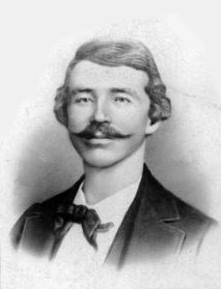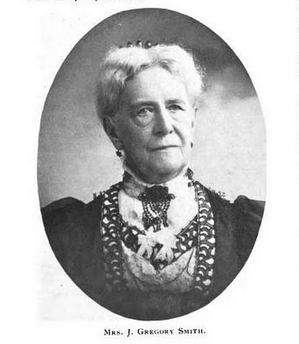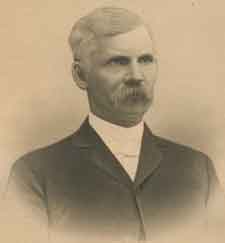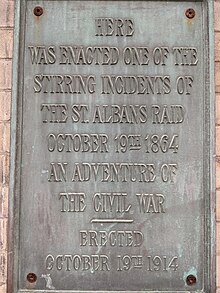
John Hunt Morgan was a Confederate general in the American Civil War. In April 1862, he raised the 2nd Kentucky Cavalry Regiment, fought at Shiloh, and then launched a costly raid in Kentucky, which encouraged Braxton Bragg's invasion of that state. He also attacked the supply-lines of General William Rosecrans. In July 1863, he set out on a 1,000-mile raid into Indiana and Ohio, taking hundreds of prisoners. But after most of his men had been intercepted by Union gunboats, Morgan surrendered at Salineville, Ohio, the northernmost point ever reached by uniformed Confederates. The legendary "Morgan's Raid", which had been carried out against orders, gained no tactical advantage for the Confederacy, while the loss of his regiment proved a serious setback. Morgan escaped from Union prison but his credibility was low, and he was restricted to minor operations. He was killed at Greeneville, Tennessee, in September 1864. Morgan was the brother-in-law of Confederate general A. P. Hill. Various schools and a memorial are dedicated to him.

Saint Albans, commonly abbreviated as St. Albans, is a town in Franklin County, Vermont, United States. As of the 2020 census, the population was 6,988. The town completely surrounds St. Albans City, which is a separate municipality.

In the context of the American Civil War (1861–65), the border states were slave states that did not secede from the Union. They were Delaware, Maryland, Kentucky, and Missouri, and after 1863, the new state of West Virginia. To their north they bordered free states of the Union, and all but Delaware bordered slave states of the Confederacy to their south.

Quantrill's Raiders were the best-known of the pro-Confederate partisan guerrillas who fought in the American Civil War. Their leader was William Quantrill and they included Jesse James and his brother Frank.

William Clarke Quantrill was a Confederate guerrilla leader and mass murderer during the American Civil War.
At the time of the American Civil War (1861–1865), Canada did not yet exist as a federated nation. Instead, British North America consisted of the Province of Canada and the separate colonies of Newfoundland, New Brunswick, Prince Edward Island, Nova Scotia, British Columbia and Vancouver Island, as well as a crown territory administered by the Hudson's Bay Company called Rupert's Land. Britain and its colonies were officially neutral for the duration of the war. Despite this, tensions between Britain and the United States were high due to incidents such as the Trent Affair, blockade runners loaded with British arms supplies bound for the Confederacy, and the Confederate Navy commissioning of the CSS Alabama from Britain.

The Chesapeake Affair was an international diplomatic incident that occurred during the American Civil War. On December 7, 1863, Confederate sympathizers from the Maritime Provinces captured the American steamer Chesapeake off the coast of Cape Cod. The expedition was planned and led by Vernon Guyon Locke (1827–1890) of Nova Scotia and John Clibbon Brain (1840–1906). When George Wade of New Brunswick killed one of the American crew, the Confederacy claimed its first fatality in New England waters.

The Fenian raids were a series of incursions carried out by the Fenian Brotherhood, an Irish republican organization based in the United States, on military fortifications, customs posts and other targets in Canada in 1866, and again from 1870 to 1871. A number of separate incursions by the Fenian Brotherhood into Canada were undertaken to bring pressure on the British government to withdraw from Ireland, although none of these raids achieved their aims.
The Southern Victory series or Timeline-191 is a series of eleven alternate history novels by author Harry Turtledove, beginning with How Few Remain (1997) and published over a decade. The period addressed in the series begins during the Civil War and spans nine decades, up to the mid-1940s. In the series, the Confederate States defeats the United States of America in 1862, therefore making good its attempt at secession and becoming an independent nation. Subsequent books are built on imagining events based on this alternate timeline.

John Taylor Wood was an officer in the United States Navy and the Confederate Navy. He resigned from the U.S. Navy at the beginning of the American Civil War, and became a "leading Confederate naval hero" as a captain in the Confederate Navy. He was a lieutenant serving aboard CSS Virginia when it engaged USS Monitor in 1862, one of the most famous naval battles in Civil War and U.S. Naval history. He was caught in 1865 in Georgia with Confederate President Jefferson Davis' party, but escaped and made his way to Cuba. From there, he got to Halifax, Nova Scotia, where he settled and became a merchant. His wife and children joined him there, and more children were born in Canada, which is where he lived out the remainder of his life.

The Raid is a 1954 American Western film set during the American Civil War. It stars Van Heflin, Anne Bancroft, Richard Boone and Lee Marvin. It is loosely based on a true incident, the St. Albans Raid, as well as the book by Herbert Ravenal Sass. However the film made a significant change, turning the raid into an act of revenge for William Tecumseh Sherman's burning of Atlanta.
The Battle of Salineville occurred July 26, 1863, near Salineville, Ohio, during Morgan's Raid in the American Civil War. It was the northernmost military action involving an official command of the Confederate States Army. The Union victory shattered John Hunt Morgan's remaining Confederate cavalry, and led to his capture later that day.
The Confederate Secret Service refers to any of a number of official and semi-official secret service organizations and operations conducted by the Confederate States of America during the American Civil War. Some of the organizations were under the direction of the Confederate government, others operated independently with government approval, while still others were either completely independent of the government or operated with only its tacit acknowledgment.
The trans-Mississippi theater of the American Civil War was the scene of the major military operations west of the Mississippi River. The area is often thought of as excluding the states and territories bordering the Pacific Ocean, which formed the Pacific coast theater of the American Civil War (1861–1865).

Ann Eliza Smith was an American author. She was president of the board of managers for the Vermont woman's exhibit at the Centennial Exposition of 1876, at Philadelphia, and was frequently chosen in similar capacities as a representative of Vermont women. During the Civil War, she coordinated a response to the Confederate raid on St. Albans on October 19, 1864. In 1870, Governor Peter T. Washburn, who had served as adjutant general of the Vermont Militia during the war, recognized her efforts and presented her with an honorary commission as a lieutenant colonel on his military staff.

During the American Civil War, the State of Vermont gave strong support to the Union war effort, raising troops and money. According to Rachel Cree Sherman:
By the spring of 1865 Vermont was devastated, having sent one tenth of its entire population to war, with a loss of over 5,000 lives to battle, wounds, and disease. The state had dedicated nearly $10 million to support the conflict, half of that amount offered up by towns with no expectation of recompense.

During the American Civil War, Missouri was a hotly contested border state populated by both Union and Confederate sympathizers. It sent armies, generals, and supplies to both sides, maintained dual governments, and endured a bloody neighbor-against-neighbor intrastate war within the larger national war.

Bennett Henderson Young was a Confederate officer who led forces in the St Albans raid, an act of terrorism during the American Civil War. As a lieutenant of the Confederate States Army, he entered Vermont from Canada and occupied the town of St. Albans.

The Great Lakes Patrol was carried out by American naval forces, beginning in 1844, mainly to suppress criminal activity and to protect the maritime border with Canada. A small force of United States Navy, Coast Guard, and Revenue Service ships served in the Great Lakes throughout these operations. Through the decades, they were involved in several incidents with pirates and rebels.

The John H. Morgan Surrender Site is the place where, during the American Civil War, Brig. Gen. John Hunt Morgan, the leader of Confederate troops responsible for Morgan's Raid, surrendered to Union troops following the Battle of Salineville. The site is located at a crossroads between the villages of Gavers and West Point in Columbiana County, Ohio, about 60 miles northwest of Pittsburgh, Pennsylvania. The site was listed on the National Register of Historic Places on April 23, 1973 for its military significance.
















